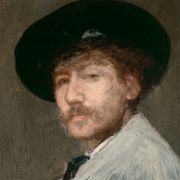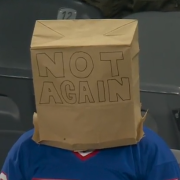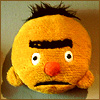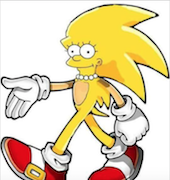|
Mustang posted:I'm looking to get started with oil painting but have a question in regards to paint thinner/brush cleaner. The room I will be painting in doesn't have any ventilation other than a window that I can open, is there a big difference in the use of turpentine vs lavender essence brush cleaner? Just trying to avoid breathing in a bunch of toxic fumes! If you are going to use a thinner, don't use real turpentine. That's definitely the most dangerous and toxic option. There are odorless mineral spirits which are alternatives ( brands like Turpenoid or Gamsol). Those are quite a bit safer but unfortunately there is no product out there that's 100% safe. Solvents have to be strong to do the job after all. Brush cleaners are different though, you don't need anything fancy or toxic for that. Just Dawn soap will do the job or even something like Murphy's wood soap works very well. So you don't need solvent to clean. Though at least there's a few things you can do to make yourself safer. Try not to paint in the same room you sleep in since that'll increase your exposure by a lot. And if you can keep that window open too, it'll really help. You can also use a portable fan to improve airflow too. You don't need anything super fancy. You can also keep your solvent jar closed as you work and just open it when you need to dip the brush in. And if you start to have a headache as you work then maybe take a break for a bit in a different room away from the thinner. If you take reasonable precautions you should be fairly safe with it. Also saying just in case, the biggest risk with thinners is usually that they are extremely flammable. So make sure that any thinner soaked rags or materials aren't where they might get exposed to heat or a spark. Don't have that stuff just lying around when it's not in use, etc. And last if you do get nervous about it, you can try painting without thinners. Plenty of artists don't use any medium or thinners and do just fine. Sargent for instance just used paint and nothing else. It definitely has a different feel to work that way but it is something you can do. The paint itself is safe (so long as you don't eat it) since linseed oil doesn't have any toxic fumes. So you do have some options! JuniperCake fucked around with this message at 02:21 on Jul 13, 2023 |
|
|
|

|
| # ? Apr 27, 2024 16:11 |
|
Wear a respirator with VOC filters when working with solvents. What do you think that headache is doing to your brain? There's a lot of established culture that, oh, it sucks to work with but it's fine for short periods...and this is all lies. Do not inhale solvents. Wear a respirator and ventilate the area, or do not use the solvents to begin with.
|
|
|
|
Thanks for the advice! Going to go with not using any solvents, I bought several solvent free substitutes that I'll try though. Bought Gamblin Solvent Free Medium Gel and their Solvent Free Fluid since they were pretty cheap and a oil painter on YouTube recommended trying them for painting without solvents. Definitely seems like an awful idea to use solvents to paint in what is essentially my guest bedroom in a 2 bedroom apartment.
|
|
|
|
Quick photoshop question from a photoshop-incompetent goon. I'm trying to select part of a photo, remove the background, and rescale it for purposes of making die cut stickers. I've been able to select the object and copy it into a new layer, then select it again and rescale it. The weird thing is there is a faint outline of the original object in the new layer that doesn't rescale and I can't figure out what option in the initial object selection process or command-j copying that created it. It's not just a display artifact because it shows up in an exported png. Any thoughts? If anyone has their favorite photo bits-into-stickers tutorials that they want to share that would be cool too. I haven't found any that dealt with rescaling the image adding cut lines of a specified size, etc. I feel like I'm in the middle ground of not knowing the stuff that's painfully obvious to people who use photoshop a lot but not being willing to just give the unprocessed photo to VistaPrint to let them do it all.
|
|
|
|
BetterLekNextTime posted:Quick photoshop question from a photoshop-incompetent goon. I'm trying to select part of a photo, remove the background, and rescale it for purposes of making die cut stickers. This is probably the 'tolerance' or 'anti-alias" setting:  Here's part of your AV, magic-wanded with a tolerance of 25, and no anti-alias:  And the same settings but with anti-alias:  I would also suggest going into 'refine edge' once you've grabbed a selection that seems right with magic brush. This allows you to play with it in real-time to see what the result would be:  You might find that using the "shift edge" adjustment allows you to scale it back and avoid the bordering issues you're seeing. Good lek!
|
|
|
|
Thanks, I'll check those options out. Somehow with fiddling around it went away and I've got a design I'm happy enough with to order a small batch. I'll find some lessons on selection once I brute force a couple more designs. It's definitely not totally intuitive to me yet.
|
|
|
|
Is there a film/tv props/replicas/cosplay thread? My search fu is weak, yet I can't help but feel that surely such a thread must exist somewhere. edit - VVV Sweet thanks! N17R4M fucked around with this message at 16:21 on Jul 24, 2023 |
|
|
|
N17R4M posted:Is there a film/tv props/replicas/cosplay thread? My search fu is weak, yet I can't help but feel that surely such a thread must exist somewhere. https://forums.somethingawful.com/showthread.php?threadid=3981799
|
|
|
|
Hi, I am making some stickers! Where do the vector drawing nerds hang out? Is there a thread where people complain about Illustrator and Inkscape and SVG and fonts getting hosed up? Also if there is a thread where people talk about sticker printing shops, that's relevant too. e: SVG vs PNG proofs  I've solved the immediate problem re. printing my sticker. But I am looking for a place to ask about similar issues in the future. ryanrs fucked around with this message at 01:37 on Jul 27, 2023 |
|
|
|
If you're not converting your dynamic text to outlines before sending to a printer that on you, not the programs (if I'm understanding the meme correctly).
|
|
|
|
Yes, I figured that out. But for future stuff, is there a relevant thread?
|
|
|
|
ryanrs posted:Yes, I figured that out. But for future stuff, is there a relevant thread? The digital art thread is probably your best bet.
|
|
|
|
thank you!
|
|
|
|
Can anyone recommend a consumer-priced printer that can print on 8"x10" or larger rigid illustration board 0.3" thick? Does such a thing even exist? It would need to be horizontal feed or vertical feed. Does not need to do color but that would be a nice plus. I want to do lineart digitally and then print onto an illustration board to do color traditionally but I haven't had much luck finding non-industrial printers that can handle rigid materials. deep dish peat moss fucked around with this message at 01:18 on Jul 30, 2023 |
|
|
|
I work with large format printers and have been looking for a new large format for myself to print on cardstock and thick art paper so this is what I know Canon makes a line of printers for crafting that Red River paper recommends as especially good for card stock. TS9521C. I donít think it will quite do illustration board but it will do card stock and thick paper. This would be the most affordable option. Things like Canon Pixma Pro 200 or Epson P700 are the next step up but only take up to like 0.027Ē from what I can see. They could do any nice paper. In the $550-$1200 ballpark. Maybe the next step up could - be these would be Epson or Canon stand up giclee printers like the Epson P6000 or Canon PRO-2100. They say they take up to 1.5mm or.8mm at the thickest but some picture framers I know have put matboard through these types of printers. They start around $3k So basically a lot of words to say probably not? There are flatbed printers that could but they are very expensive. You could look around for a print shop that could print for you but guessing it would be expensive too
|
|
|
|
Thanks! It sounds like I'll need to try out some card stocks and see how they work with the materials I use, but that gets me pointed in the right direction. I mostly use Inktense Pencils which are pretty much like Watercolor pencils and there's lots of water applied, which is what has made the illustration boards so appealing, but card stock printing at home might be more affordable than a print shop. deep dish peat moss fucked around with this message at 02:29 on Jul 30, 2023 |
|
|
|
deep dish peat moss posted:Can anyone recommend a consumer-priced printer that can print on 8"x10" or larger rigid illustration board 0.3" thick? Does such a thing even exist? It would need to be horizontal feed or vertical feed. Does not need to do color but that would be a nice plus. Axidraw plotter would do it
|
|
|
|
leper khan posted:Axidraw plotter would do it I hadnít heard of these; looks super interesting I would love to try something like this with colored pencils, tho you would need to have them do a lot of smaller actions to allow for sharpening I am hoping to get a new printer in the next couple weeks. Peat Moss, pm me - I have some media I could print to for you to try using the Inktense with
|
|
|
|
deep dish peat moss posted:Can anyone recommend a consumer-priced printer that can print on 8"x10" or larger rigid illustration board 0.3" thick? Does such a thing even exist? It would need to be horizontal feed or vertical feed. Does not need to do color but that would be a nice plus. Can you print on thinner card stock or paper, and then spray mount it to a thicker board?
|
|
|
|
HungryMedusa posted:I hadn’t heard of these; looks super interesting There's a mech pencil that automatically extrudes apparently
|
|
|
|
Is there a way to create some kind of 'smart swatch' in Photoshop that will you let you change a colour in one place and it'll automatically update it everywhere else you've used it? I know how to play around with masks and adjustment layers and things to recolour an image but because of the way I set up my illustration files, with tons of layer groups, something that behaves like Paragraph Styles styles in InDesign would be amazingly useful. I see there's a Styles panel, but as far as I can tell it won't let me adjust and update a style (eg change the Colour Overlay) once it's been added.
|
|
|
|
Tenterhooks posted:Is there a way to create some kind of 'smart swatch' in Photoshop that will you let you change a colour in one place and it'll automatically update it everywhere else you've used it? I know how to play around with masks and adjustment layers and things to recolour an image but because of the way I set up my illustration files, with tons of layer groups, something that behaves like Paragraph Styles styles in InDesign would be amazingly useful. I see there's a Styles panel, but as far as I can tell it won't let me adjust and update a style (eg change the Colour Overlay) once it's been added. Photoshop has a color replacer tool, which might do what your asking, but it's a little more manual than just swapping a swatch. https://helpx.adobe.com/photoshop/using/replace-colors.html#color-replacement-tool
|
|
|
|
Tenterhooks posted:Is there a way to create some kind of 'smart swatch' in Photoshop that will you let you change a colour in one place and it'll automatically update it everywhere else you've used it? I know how to play around with masks and adjustment layers and things to recolour an image but because of the way I set up my illustration files, with tons of layer groups, something that behaves like Paragraph Styles styles in InDesign would be amazingly useful. I see there's a Styles panel, but as far as I can tell it won't let me adjust and update a style (eg change the Colour Overlay) once it's been added. Could you switch to Illustrator? Edit: or possibly using smart objects could be a solution in ps niethan fucked around with this message at 19:11 on Aug 11, 2023 |
|
|
|
HanzoSchmanzo posted:Photoshop has a color replacer tool, which might do what your asking, but it's a little more manual than just swapping a swatch. Had a play with this. It doesn't really help with the problem in my question but I can see it being useful in other situations so thanks! Always nice to learn a new tool. niethan posted:Could you switch to Illustrator? Illustrator's a no-go I'm afraid. Hand-drawn artwork and a heavy reliance on the layering system in Photoshop. I'll have a play around with smart objects but I've got a feeling it might add more steps than my current solution. More often than not I have a bunch of layer groups for each component in an illustration (say a group of characters - each character has a group with a separate layer for the linework, the overall fill, colour A / colour B / shadows etc). This lets me keep things really flexible. I work with quite limited palettes so Colour A will be the same throughout maybe 50 different layer groups and it can be a pain to change each one. For quickness, I usually just create a flattened version and do some quick and dirty image>adjustments>replace colour or hue/sat sliding to get an idea. My best solution for swapping a colour while maintaining the layering is to make sure I label (or colour) the layers really consistently. That lets me search for them and use 'Paste Layer Style' to add a different Colour Overlay to every occurrence of 'Colour A'. I could probably figure out an Action or two to speed this up even more. It can bugger things up a bit though because it overwrites the opacity slider and I sometimes use that for a bit of value variation. Still, my dream would be to build a little palette of 5 swatches and just watch changes to those propagate throughout a Photoshop file wherever I'd used them.
|
|
|
|
mispost
Futaba Anzu fucked around with this message at 23:55 on Aug 15, 2023 |
|
|
|
Not sure Iím at level 70 Photoshop currently.
|
|
|
|
This reminds me of opening clip studio paint and seeing they had a premium currency shop, and laughing irl
|
|
|
|
I bought a 5 foot skeleton and I want to figure out a way to articulate it like itís a big puppet. Does anyone have any knowledge on how this is done? Iíve seen things like that before where the puppet is mounted in front of a person wearing all black, like in the Lion King broadway show, but I donít know how that works.
|
|
|
|
Deadite posted:I bought a 5 foot skeleton and I want to figure out a way to articulate it like it’s a big puppet. Does anyone have any knowledge on how this is done? I’ve seen things like that before where the puppet is mounted in front of a person wearing all black, like in the Lion King broadway show, but I don’t know how that works. You might want to be more specific about what you want it to do. The joints in these things have only a basic range of movement and some of them are stiffer than others. What's your end goal?
|
|
|
|
I just want to figure out a way to mount the skeleton in front of me and have it mimic my movements. Here's the best video I could find to illustrate what I'm after: https://www.youtube.com/watch?v=dNWMfciB7Cw So I think I'll have to cut the skeleton apart and replace these limited movement joints with eye bolts that are hooked into each other? That would make everything looser and more fluid. Then I can mount the skeleton on black PVC pipe, or maybe there's a better way to do it? The skeleton is glow in the dark, and I've got big black light outdoor floodlights, so the goal is to do some goofy skeleton dancing on Halloween night while we're handing out candy.
|
|
|
|
Iíve been playing around with some graphic t-shirt and sportswear design ideas in adobe illustrator. basically making shirts that I think look neat. but iím relatively uneducated on the subject. any recommended books on typography, color theory, etc, particularly in the case of fashion? Also looking for any good illustrator/photoshop tutorials that focus on clothing design
|
|
|
|
Hello all. Would anyone here be willing to create a drawing for me? I am willing to pay.
|
|
|
|
Been reading Perspective Made Easy, and it includes a way of dividing a surface in perspective that im struggling to understand. Here's a lil' diagram I whipped up: The black box is the surface in perspective. According to this method you can subdivide it (for example to place windows or columns) by extending a horizontal line (the blue one), then drawing a line from the top corner to the opposite corner until it intersects that horizontal line (the purple one, in this case). From here you subdivide the blue line you've sectioned off however you like, mark those sections and then from those markers draw diagonals to the starting point of the purple line (the green diagonal). Where these lines intersect the surface (the black line), indicate where the divisions should be in perspective. The problem i've encountered is that it seems to be flat out wrong- by finding the centre of the surface (both purple lines, with a green indicating the perpendicular) and the center of the blue line (orange lines) its clear they are both different. If you continued the vertical orange line towards the top right corner, it should show a completely different center point than the purple lines show. So basically my question is am I missing something? How can this method work if it gives an inaccurate center line? I feel like somethings missing cos its an old book still in publication, surely if it were incorrect they'd have edited it by now? hope i've explained this properly!
|
|
|
|
AFistfulOfBitcoins posted:Been reading Perspective Made Easy, and it includes a way of dividing a surface in perspective that im struggling to understand. Here's a lil' diagram I whipped up: Foreshortening? Oh. Your problem is that it doesn't seem like the method foreshortens.
|
|
|
|
leper khan posted:Foreshortening? Oh. Your problem is that it doesn't seem like the method foreshortens. I think it actually does foreshorten and that's what's throwing them off. The center line is not in the center of the rectangle in perspective because of foreshortening. Edit: The more I think about it the less sure i am niethan fucked around with this message at 18:12 on Sep 27, 2023 |
|
|
|
The purple X to find the center line works to foreshorten. I've never heard of the straight line method, so I can't speak to that.
|
|
|
|
Okay i've added some letters and hopefully will be able to explain this method a bit better. I may not have been clear- this is a method to place objects on a surface in correct perspective, such as doors, windows, columns and so on, that they are the correct distance and size. It only tells you the boundaries on the horizontal plane, not how high up on the surface they should be. So step 1, draw a surface in perspective (ABCD) 2. Draw a horizontal line from B- this line has no perspective, its just a guide for later. 3. Draw a diagonal from A through C, where it hits the horizontal line marks E. 4. Subdivide the line E through B however you like. This is like a side view of a building with no perspective so you could add 2 marks anywhere along this line to define the boundaries of a door as an example. 5. From these marks, draw a diagonal to A. Where they intersect the line B-C designate where, in the foreshortened view, you would place each side of the door. I have skipped this in the diagram since it doesnt seem relevant. And here we come to the problem: I know where the center of the surface ABCD is, and how to find it. 2 diagonals one from A-C and one from B-D and where they intersect is the center (in perspective). However, when I find the center of the line B-E (the orange lines) it is not the same as the center the purple intersecting diagonals found. Im confused because this book has been pretty handy and im kinda reluctant to go 'you, the artist with enough experience to write a book about perspective are completely wrong' but I dont really see any way of resolving this method- if it cant find the center of the foreshortened surface, how can it be useful for anything? Hopefully thats a bit more clear
|
|
|
|
Thought i'd provide a little update- I remembered I had another book with a similar method and checked it out- turns out there's a pretty signifcant part missing from the one in perspective made easy, enough im confident the method as shown there doesnt work. Here is the actual method, if you're interested:  1. Begin with a horizon line, set up the surface and vanishing points however you like (lines ABCD). 2. Either to the right or the left of a vertical line, establish a measuring point (F) 3. Extend a horitzontal line from either B or A 4. Extend a line from F through C, until it hits the horizontal line (E) 5. Divide the line B to E however you wish and mark them (here I simply found the center point). From these points marked, draw a line towards F. Where they hit the line B to C, indicates the vertical placement of these divisions in perspective. The orange and yellow crosses are merely there to find the center, and as you can see they line up now. You can use this to divide a foreshortened plane however you like, there are ofc a bunch of methods but hopefully someone out there might find this useful.
|
|
|
|
Is it normal for calls for artists to essentially be just paying for a chance to possibly display your work? All of my city's calls for artists have submission fees (anywhere from $10-50 per piece), they're then juried and the selected pieces are displayed as part of an exhibition where they can be listed as for sale, usually with a price cap around $300-500 and a 30%+ commission for the gallery. It seems like a big gamble since you'd have to get over the hurdles of being selected by the jury and then actually selling at exhibition. There's one that would be ideal for my work, but the submission fee is $35/piece and the gallery takes a 35% cut, I would straight-up lose money unless at least 25% of what I submitted was chosen and then actually sold. Even the local artist grants have application fees - like a $45 application fee for a $2,000 grant that only has one recipient. There's nothing I can submit anything to as a broke artist  Am I just out of touch and this is the way arts opportunities work these days? Am I just out of touch and this is the way arts opportunities work these days?
|
|
|
|

|
| # ? Apr 27, 2024 16:11 |
|
deep dish peat moss posted:Is it normal for calls for artists to essentially be just paying for a chance to possibly display your work? Generally the rule of thumb for this is that if you have to pay them upfront then that's how the venue makes their money. Instead of making their money by selling your work, which involves putting in the effort to promote you. So that's a real red flag especially if it puts you in the situation where you have to sell x amount to just break even. Like some non-profit groups could have nominal entry fees for contests but you should never pay upfront to get into a gallery. Things have changed a lot and for the worse in the arts that's true. So more predatory practices are becoming more prevalent (like that 45 application fee for a 2000 grant wtf). But you are still better off trying to build a relationship with a single gallery that will sell your work just for a cut (though it can be a pretty high cut). Since in that case they only get paid if you get paid. That's when they have the incentive to help with promotion and marketing which are the main benefits of going with something like this anyways. JuniperCake fucked around with this message at 20:36 on Sep 29, 2023 |
|
|































